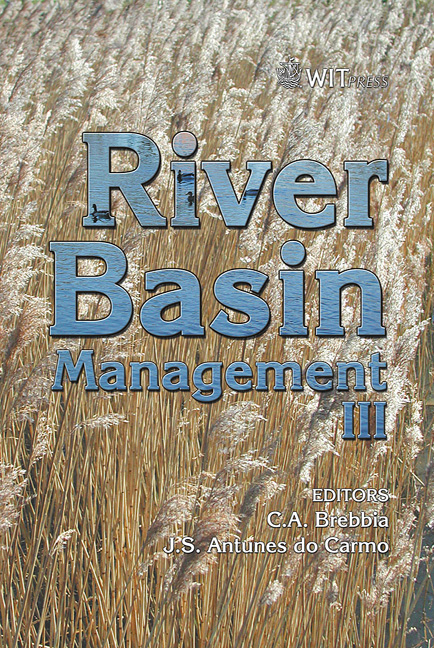Physical Models Application Of Flow Analysis In Regulated Reservoir Dams
Price
Free (open access)
Transaction
Volume
83
Pages
10
Published
2005
Size
518 kb
Paper DOI
10.2495/RM050021
Copyright
WIT Press
Author(s)
M. R. M. Tabatabai, S. Faghihirad & M. Kolahdoozan
Abstract
Nowadays lack of water resources in semi–arid countries and also optimum operation of water systems play major roles in water management decisions-makings. River regulated reservoirs are constructed downstream of reservoir dams with relatively low elevation appropriately to supply water to river riparian. They are mainly used for agricultural and industrial consumptions. However, the major difference between these and reservoir dams appear in dam elevation as well as generated turbulent flow in the regulated reservoir by flow diversion for various regulatory conditions. These characteristics have caused complex flow pattern generation, which may be difficult to forecast. Physical hydraulic models are actually constructed to obtain a better understanding of flow behaviour and its impact on hydraulic structures. In this paper, physical modelling of regulated reservoir dams associated with water intakes are studied in details to establish a relationship between water discharge and the proportion by which it is flown through the intakes. Velocity measurements were also made to establish velocity field upstream of diversion dam as well as intakes. Optimum water elevation in the regulated reservoir was also determined while intakes were operating at maximum capacity. Keywords: reservoirs, hydraulic models, physical models, flow pattern, water intake, diversion dam. 1 Introduction A hydraulic model cannot reproduce an equal ratio of all the prototype forces and satisfy perfect similarity. Also practical limitations of available space, funds
Keywords
reservoirs, hydraulic models, physical models, flow pattern, water intake, diversion dam.





